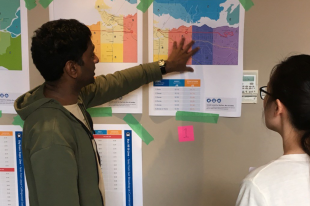Camilla Buchanan at Policy Lab Blog: “…Prototyping is common in the product and industrial design process – it has also extended to less tangible design sub-specialisms like service design. Prototypes are low fidelity mockups of an imagined idea or solution and they allow for testing before implementation. A product can be tested in cardboard form, a website can be tested through a
Policy is a more hazy concept, it implies a message or statement of intent which sets a direction of work. Before a policy statement is made there will be some form of strategic conversation. In governments this usually takes place at the political level amongst ministers or within political parties and there is little scope for outsiders to enter these spaces. Policies set by elected officials tend to be high-level statements – as short as a line or two in a manifesto – expressed through speeches or other policy documents like White Papers.
A policy statement therefore expresses a goal and it sets in motion realisations of that goal through laws, programmes or other activities. A short policy statement can determine major programmes of government work for many years. Policy programmes have their own problem spaces to define and there is much to do in order to translate a policy goal into practical activities. Whether consciously or not, policy programmes touch the lives of millions of people and the unintended consequences or conflicting results from the enactment of poor policies can be extremely harmful. The potential benefits of testing policy goals before they are put in place are therefore huge.
The idea of design interacting directly with
It is still early days for articulating exactly how and why the “physical making” aspect of design is so important in government contexts but almost all designers working in this way will emphasis it. An obvious benefit to building something real is that operational errors become more evident. And because prototypes make ideas manifest, they can help to build consensus or reveal where it is absent. They are also a way of asking questions and the presence of a prototype often prompts discussion of broader issues.
As an example, the picture below shows staff from the Service Design team at the consultancy OpenRoad in Vancouver considering advanced prototypes of changes to transit fare policy for the city for their client TransLink….(More).

